
The post 10 Fascinating Snake Facts That Will Change How You See These Creatures appeared first on A-Z Animals.
Ophidiophobia (the phobia of snakes) is one of the more common phobias psychologists treat today. Some researchers posit that this is an evolutionary response and that humans are wary of snakes because our ancestors avoided anything that could potentially harm us. Regardless, up to 50% of the population is nervous around snakes, and 2-3% meet the criteria for a phobia.
However, snake phobias prevent people from recognizing how interesting and amazing these creatures are. Snakes have been around for an estimated 128 million years, if not longer. There are over 4,000 snake species in existence. Many of these snakes required unique adaptations to survive this long and grow successfully in their given area. If you’re ready to slither through some fascinating snake facts, here are the ten you must know.
1. Some Snakes Can “See” Heat

Specialized organs allow several snake species to detect infrared radiation, giving them a unique hunting capability.
©Alfredo Maiquez/Shutterstock.com
Certain snakes, such as pit vipers, boas, and pythons, have specialized pit organs that essentially provide them with built-in thermal imaging technology. These heat-sensitive organs are usually located between the eye and the nostril on either side of the snake’s face.
Pit organs have a membrane full of nerve endings that respond to infrared radiation. Snakes can use pit organs to identify potential prey in their environment, even in the dark. Every creature emits heat and thermal energy, with warm-blooded animals giving off more. When a mouse, other mammals, or birds are near a snake with pit organs, the snake can generate a thermal image to help it strike more precisely.
2. Snakes Are a Specialized Lineage of Lizards
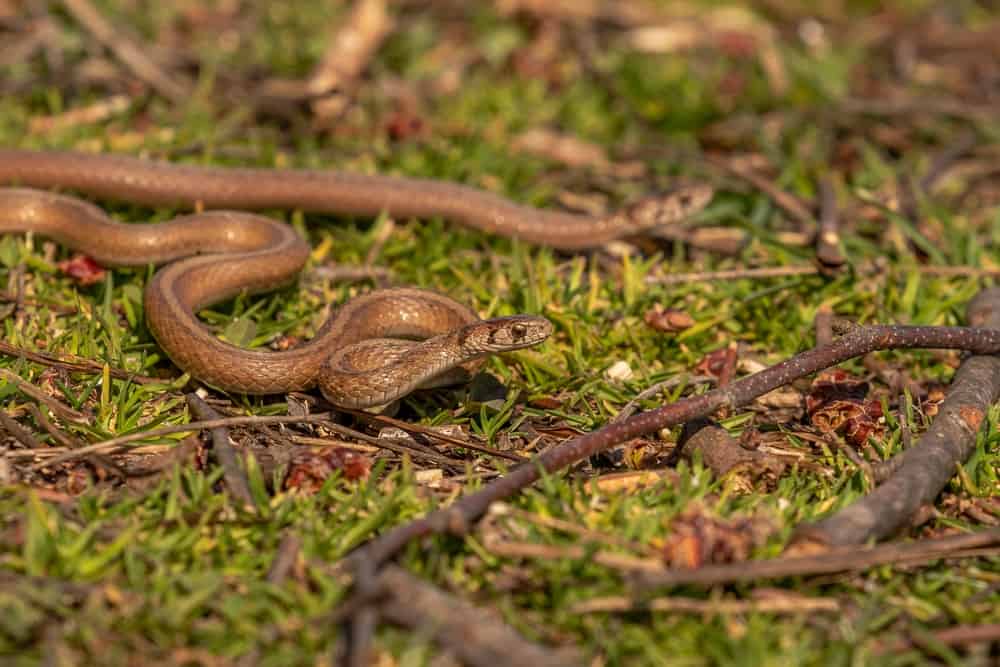
Research suggests that snakes likely evolved from lizard-like ancestors.
©Judith Lee/Shutterstock.com
Snakes and lizards are both reptiles. But, beyond that, they might be more closely related than you think. Maryann Barbon, Master Herpetologist and Lead Venomous Instructor for the Amphibian Foundation’s Junior Master Herpetologist Program, has been working with snakes for over 12 years and enjoys educating others about what makes snakes so unique. “Safe to say, I was always a snake lover,” she says.

In her work with the Rattlesnake Conservancy, Maryann Barbon teaches students to use tools, rather than their hands, when working with venomous species.
©Maryann Barbon
Barbon, who also runs venomous snake education with the Rattlesnake Conservancy, explains, “Snakes belong to the suborder Serpentes, which is actually in the order Squamata. In this sense, snakes are a specialized lineage of lizards.”
The order Squamata includes over 11,000 diverse species. Talk about a varied hiss-tory!
3. Snakes Are Much More Docile Than You Think

Although many people are afraid of snakes, they typically will not attack or bite without provocation.
©Mark F Lotterhand/Shutterstock.com
Media portrayals of certain snakes have painted them as angry, easy-to-strike, and incredibly dangerous. But this just isn’t true. Snakes are actually remarkably docile and go out of their way to avoid humans. Marjan Ghadrdan, the COO and Director of Animal Care at the AWARE Wildlife Center and Venomous Programs Coordinator with the Amphibian Foundation, feels that the fear of snakes has directly resulted from misconceptions about snake behavior. “Snakes do not want to hurt humans,” she says. “The vast majority of snake bites occur because someone is trying to catch or kill a snake.”

Marjan has extensive experience working with snakes, and currently assists in snake-wrangling on film sets and acts as the “Animal Expert” for the show Weather Gone Viral.
©Marjan Ghadrdan
Timber Rattlesnakes are Especially Misunderstood
Rattlesnakes are often feared due to their potent venom and misconceptions about their nature, which many believe is aggressive. However, the rattlesnake portrayals you see in movies or television shows do not align with actual rattlesnake behavior.
Ghadrdan began working with snakes when someone brought “a large adult 4-foot long timber rattlesnake that she saved from some people who were attempting to kill it” into the wildlife center. As Ghadrdan called around to ask for advice on what to do with the snake, she was shocked: “Most everybody told me to kill it. I decided in that moment, since no one was willing to help venomous snakes, that I would.”
Snakes do not want to hurt humans. The vast majority of snake bites occur because someone is trying to catch or kill a snake.
Marjan Ghadrdan, COO and Director of Animal Care at the AWARE Wildlife Center and Venomous Programs Coordinator with the Amphibian Foundation
Since then, Ghadrdan has seen firsthand “how docile and amenable snakes can be towards humans. It’s also interesting how they can be kind to each other, taking care not to show aggression even if they’re scared and showing defensive behaviors towards me.”
Brian J. Bielema, who has been studying the natural history of timber rattlesnakes for over 50 years, agrees with Ghadrdan’s assessment. For the last 35 years, Bielema has been studying an active den and birthing rookery of timber rattlesnakes in Illinois.
“Of the many close encounters that I have had, I have never been struck at even when accidentally stepping on one. Also, they rarely rattle and tend to quickly retreat or stay motionless to avoid detection. They are extremely tolerant of humans and will avoid all contact if possible,” Bielema shares.
4. Snakes Can Open Their Jaws to Remarkable Degrees
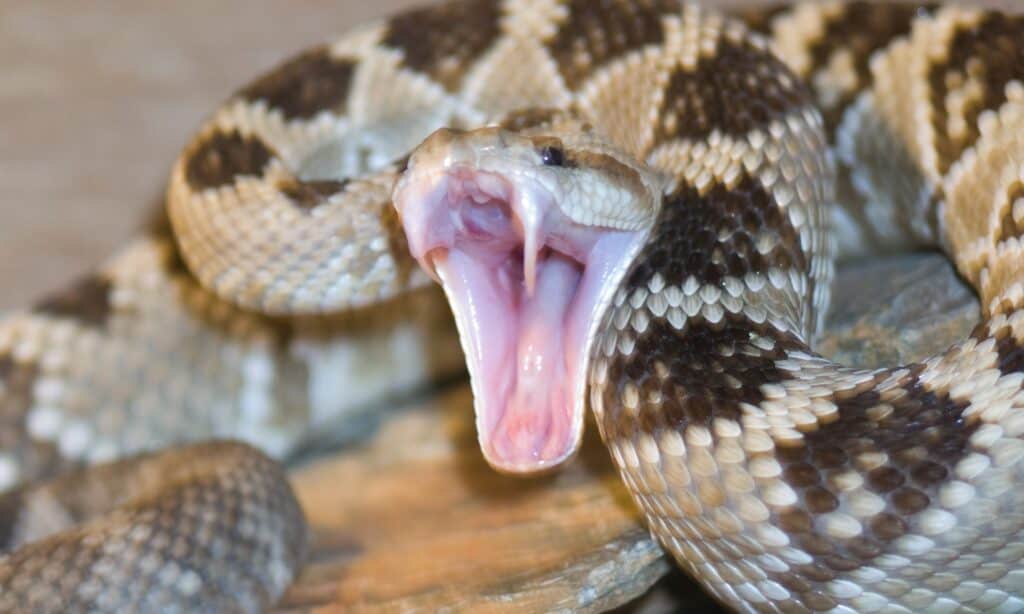
A human jaw can typically open around 25 degrees, which is significantly less than a snake’s abilities.
©iStock.com/DaveGartland
One of the most jaw-dropping abilities that snakes have is their ability to open their jaws extremely wide. While the myth that snakes can unhinge their jaws isn’t true, many snakes can expand their mouths to around a 150 or 160-degree angle.
Snakes can achieve this through skull bones that are connected by flexible ligaments instead of more rigid joints. Snake jaws are also split into two parts (left and right). This lets snakes move each part of their jaw independently, which helps them move larger prey into their mouths. Usually, snakes can eat prey up to three times their size and body weight. But larger snakes like Burmese pythons have been observed eating prey like deer that are way bigger than scientists anticipated was possible.
5. Tail-Shaking Behavior Isn’t Unique to Rattlesnakes
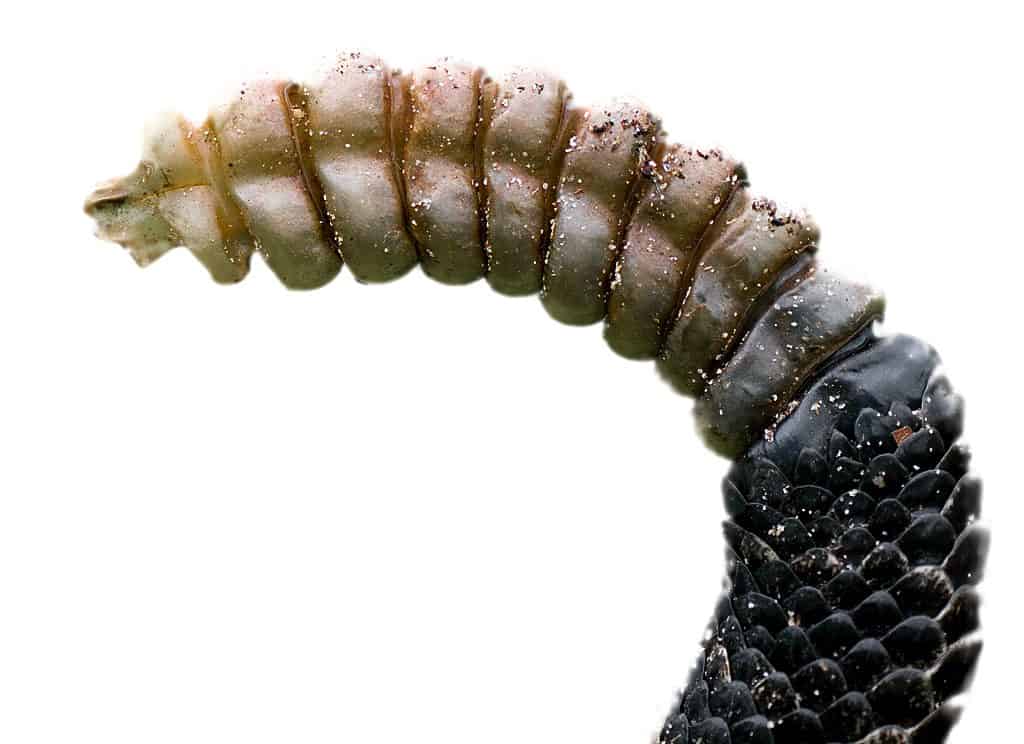
Many people think of rattlesnakes when they think of snake tail-shaking, but this behavior is actually seen in various species.
©Chase D'animulls/Shutterstock.com
You’ve seen it in almost every rattlesnake TV portrayal: a fearsome tail-shaking and rattling that warns of danger ahead. Although tail rattling is clearly seen in rattlesnakes, snakes all over the world show this behavior, “even in places where rattlesnakes have never existed,” says Barbon.
She continues, “It’s more likely that rattlesnakes evolved to be extra good tail shakers with the development of their famous rattle, rather than other snakes who shake their tails defensively trying to imitate a rattlesnake.” This suggests that tail-shaking might be an ancient defensive behavior.
What Other Snakes Shake Their Tails?
The European Adder, Asian viper, and North American colubrids, like certain rat snake species, have displayed tail-shaking, usually for defense purposes. Some snakes may also shake their tails for other reasons. For example, adders are known to lightly shake or vibrate their tails before mating.
While more luring than shaking, Barbon explains that “one of the coolest physical adaptations in snakes is the tail of a spider-tailed horned viper (Pseudocerastes urarachnoides). Their tail is spiked with a bulb at the end. They move the tail side to side, and it looks like a crawling spider. Other snakes use similar caudal luring behaviors, utilizing brightly colored tails such as in young cottonmouths, copperheads (both Agkistrodon sp.), and pygmy rattlesnakes (Sistrurus miliarius).”
6. Snakes Can “Smell” With Their Tongues
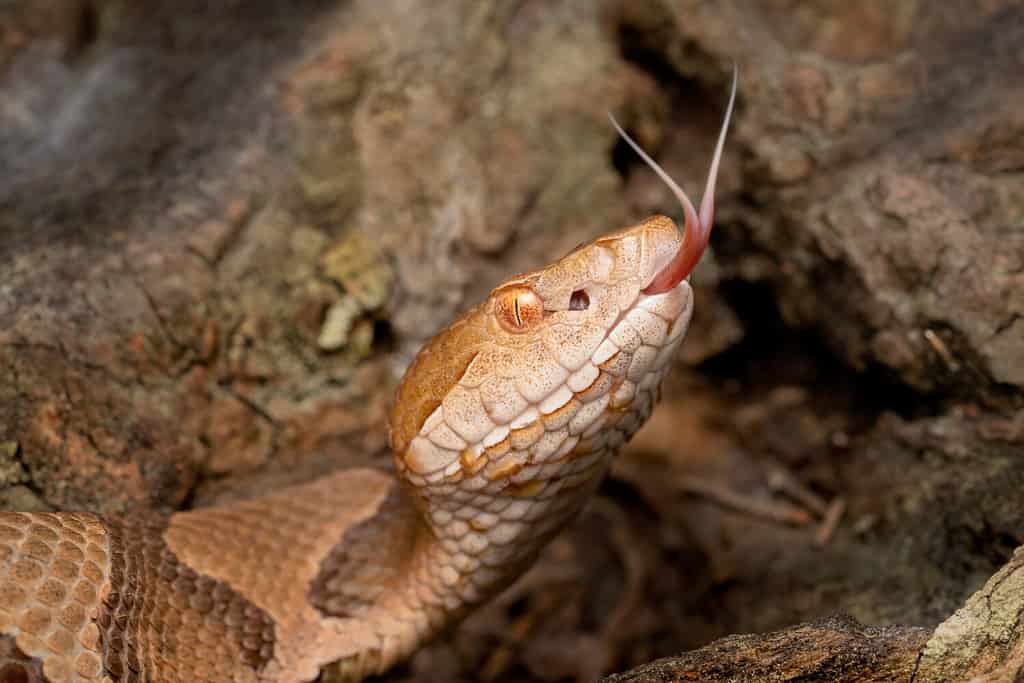
A snake’s forked tongue actually has benefits in reading its environment by allowing it to “taste” two things at once.
©Mark_Kostich/Shutterstock.com
Snakes have a specialized organ known as a Jacobson’s organ, which is also found in lizards, amphibians, and certain mammals like cats and dogs. This organ, also known as the vomeronasal organ, sits on the roof of snakes’ mouths. When a snake sticks out its tongue, it collects scent particles in the air. The Jacobson’s organ reads these scents to allow snakes to “taste” their surroundings.
If you’ve ever seen a snake (or just the photo above), you’ve noticed that snakes have a forked tongue. But this is extremely important and used strategically with the Jacobson’s organ. Snakes can sample scent chemicals from two directions. In this way, says Ghadrdan, “they can actually ‘smell in stereo,’ like a chemical version of depth perception.”
From this, snakes are able to:
- Follow potential prey in a specific direction
- Find mates
- Detect the presence of predators or aggressive snake species in the area
7. Some Snakes Lay Eggs, But Others Give Live Birth
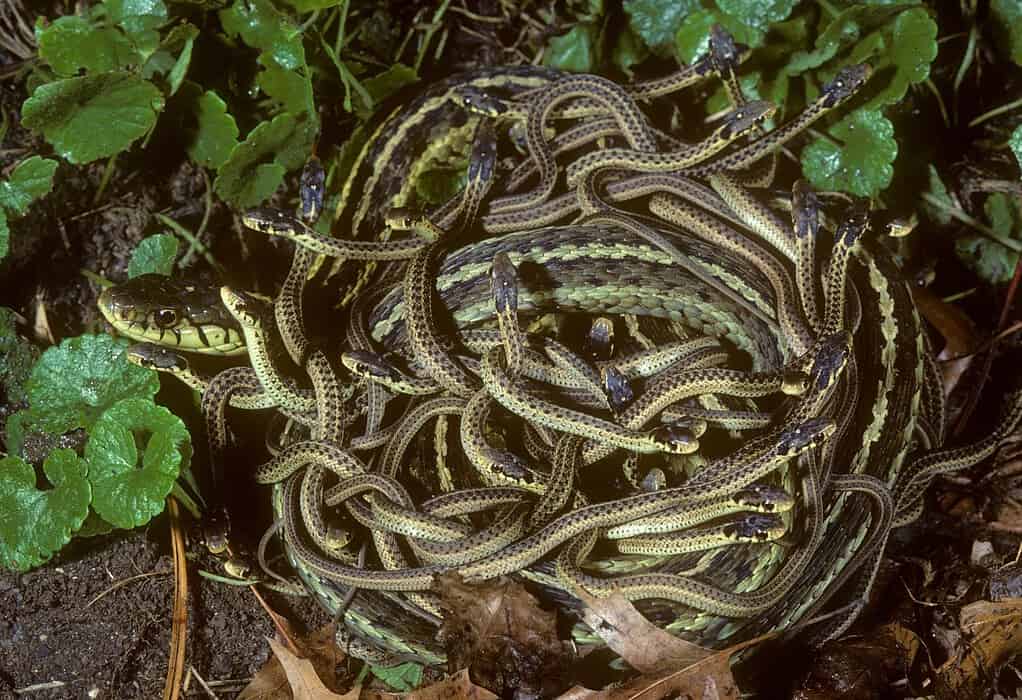
Snake mothers who give birth to eggs are often less present and protective of their young.
©Breck P. Kent/Shutterstock.com
Snakes can be either oviparous, viviparous, or ovoviviparous when it comes to reproduction. Let’s break down what each term means.
Oviparous means that the snake lays eggs. Many pythons are oviparous, as are kingsnakes. Oviparous snakes often have larger clutches of eggs and do not have to bear the burden of carrying young, saving them energy. However, the eggs laid by these species are often at greater risk of harm from predators or damage from bad weather.
Viviparous snakes give birth to live young that develop inside the mother and are nourished through a placenta-like structure. Ovoviviparous snakes also give birth to live young, but the eggs hatch inside the mother’s body before the babies are born fully developed.
Live-bearing snakes, such as rattlesnakes, often have fewer offspring than oviparous species. However, viviparous and ovoviviparous snakes may be more protective of their young. “Rattlesnake mothers stay with their offspring and provide some protection for a period of time after birth. Babies follow their mothers’ scent trails to find shelter,” Barbon explains.
Conservation Needs
Unfortunately, shares Bielema, “as a species, the timber rattlesnake is struggling to survive. In the past 35 years, reproduction in my population has decreased. Many populations have been extirpated and will not return. Changes in the landscape, such as the overshading of historic basking sites, have eliminated much of their suitable reproductive habitat.”
Since Barbon states that a mother rattlesnake “may only give birth once or twice in her life,” conservation efforts around snake reproductive areas (for rattlesnakes or otherwise) are extremely important to protect these animals.
8. Snakes Have One Long Functional Lung

Many snakes’ organs had to adapt to their unique body shape.
Pretty much every vertebrate uses two lungs to breathe. But not snakes. While snakes do usually have two lungs, they have “one long lung” that functions well, explains Ghadrdan, and one poorly developed, reduced, or even absent lung. These differences are also present in the pulmonary arteries. Research published in PLoS One found that the right pulmonary artery always develops. The left only develops if the left lung does too. The extremely efficient right lung has developed over millennia of evolution to allow adequate blood flow and oxygenation throughout a snake’s longer, more flexible body. Lengthwise, the functional lung usually runs anywhere from 40% to 80% of a snake’s body.
9. Snake Strike Speed Is Unmatched
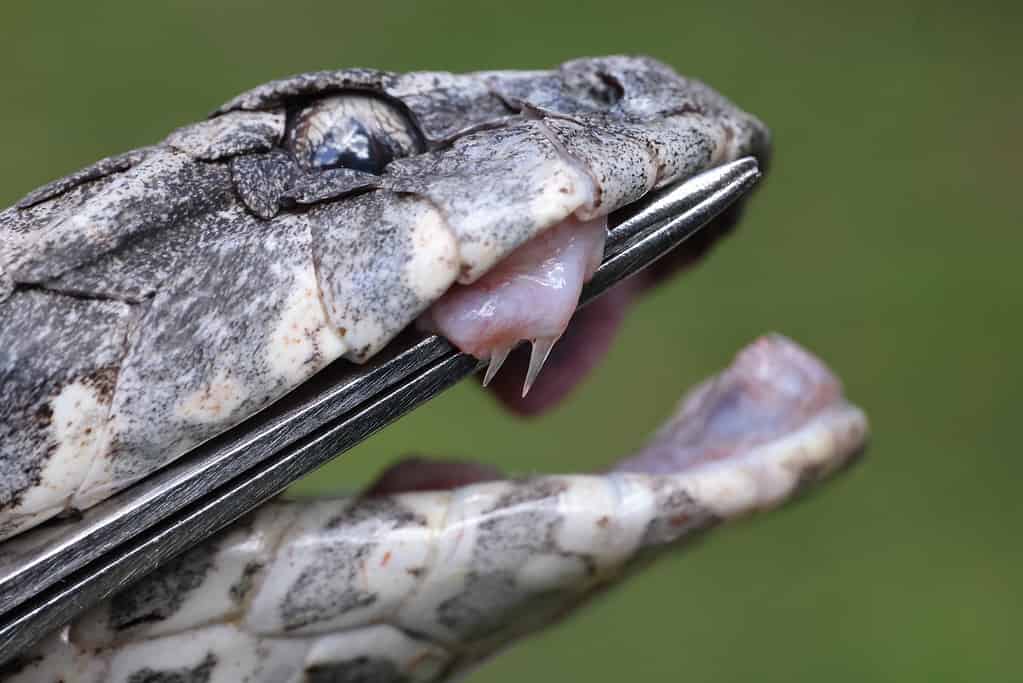
The common death adder, one of Australia’s most venomous snakes, has a strike speed of just 100 milliseconds.
©iStock.com/Ken Griffiths
“Snakes can strike and be back in position faster than your eyes can register,” Ghadrdan says, and she’s right. Rattlesnakes can lunge six inches in 70 milliseconds. That’s faster than you can blink (which is about 200 milliseconds).
In the past, many scientists hypothesized that fast snake strikes were limited to venomous snake species. More recent studies refute that. Scientists set out to determine the differences in strike speeds between:
- Western diamond-backed rattlesnake (venomous)
- Texas rat snake (non-venomous)
- Western cottonmouth (venomous)
While the rattlesnake had the fastest strike speed at 279 meters per second squared, the rat snake came in shortly behind at 274 meters per second squared. This suggests that snakes developed fast strike speeds across all species for hunting and defense.
10. Some Snake Venoms Could Be Therapeutically Repurposed

Scientists are looking at using snake venom as a potential intervention for cancer or hypertension.
©Ton Ponchai/Shutterstock.com
Snake venom can be incredibly damaging. If you’re bitten by a venomous snake like a cottonmouth or a copperhead, you may experience a range of effects ranging from severe pain and skin necrosis to tissue damage or blood cell dysfunction. But snake venom has also become a promising therapeutic option that scientists are exploring for several conditions.
In 1981, an ACE inhibitor called Captopril was approved for the treatment of heart failure and hypertension. Scientists designed this drug based on compounds in Brazilian viper venom.
Today, Ghadrdan, who also runs the Copperhead Hotline for the Amphibian Foundation, “a relocation and advocacy program whose primary goal is to educate the public on peaceful coexistence,” explains that snake venom is being investigated for oncological purposes. “The venom of copperheads has shown promise in lab settings inhibiting the spread of cancer cells,” she says.
Outside of cancer, snake venom and its components are being used for drug discovery in some of the following conditions:
- Chronic pain
- Acute ischemic strokes
- Blood disorders
- Diabetes
The post 10 Fascinating Snake Facts That Will Change How You See These Creatures appeared first on A-Z Animals.
July 06, 2025 at 06:02PMJessica Lynn
.jpeg)
.jpeg)

0 Comments